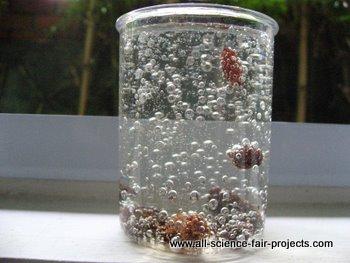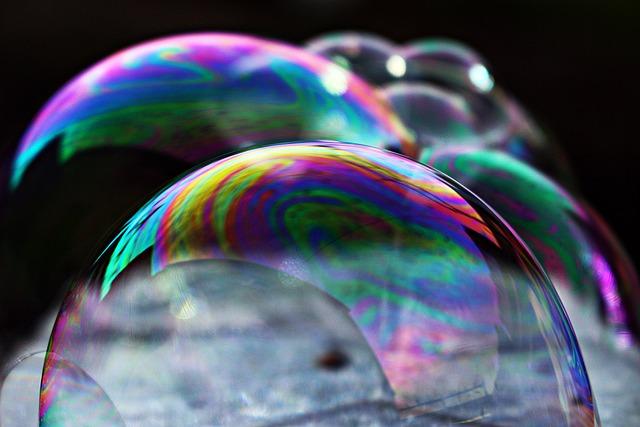| Complexity level: | 8 |
| Project cost ($): | 100 |
| Time required: | 2 hours to prepare, 1 hour to conduct the science experiment |
| Material availability: | Hydrogen gas supplies can be obtained through your school laboratory |
| Safety concerns: | Suitably qualified persons are required to handle combustible gases and pressurized storage tanks. Safety goggles should be worn at all times. Fire safety precautions should be taken at all times. |
Hypothesis
As the size of the hydrogen foam bubbles increase, the energy released in the combustion will be greater.
Overview
Hydrogen fuel
Hydrogen is actually a carrier and not a source of energy, unlike fossil fuel or coal. Hydrogen molecules are not naturally available on our planet, with most of the hydrogen on Earth is to be found in water, bonded to oxygen, or in fossil fuel, bonded with hydrocarbons.
The production of hydrogen gas is done through steam reforming, or the electrolysis of water. Today, over 90% of hydrogen gas is produced through steam reforming, compared to only 4% through electrolysis. The energy required for steam reforming is normally obtained by burning fossil fuels like natural gas, coal or oil. Due to process efficiency, more energy is required when burning fossil fuels, compared to the amount of energy produced and stored in the hydrogen molecules. This excess energy will be mainly lost as heat in the steam reforming process.
The combustion process is a sequence of chemical reactions that happens between a fuel source and an oxidant. When hydrogen acts as the fuel source, it will react with oxygen in the atmosphere, to produce water and heat.
2H2 + O2 -> 2H2O (water) + Heat
Scientific Terms
Materials
The materials required for this science fair project:
- 1 tank of hydrogen gas
- 1 flow control valve to control the rate of flow of hydrogen gas from the tank
- Tubing for the gas outlet, to be connected to the flow control valve
- 1 large basin
- 1 bottle of liquid soap
- Water
- 1 lighter
- 1 ruler
- Various filters to control bubble sizes
Procedure
1. For this experiment, the independent variable is the size of the bubbles created in the soap solution. The dependent variable is the intensity of flames released during the combustion of the soap bubbles, and this will be determined through observation and comparison. The constants (control variables) are the temperature of the environment (which will remain at room temperature), the size of the basin, the amount of water, the amount of soap and the diameter of the outlet tube.
2. Attach the lever to the hydrogen tank in order to regulate the amount of gas released from the tank. Attach and secure one end of the tube to the lever.
3. Fill the basin with liquid soap and some water. Mix the solution and place the loose end of the tube inside the basin. Attach a filter to the end of the tube. Gradually adjust the rate of hydrogen gas released into the soap mixture, and vary the filters used, to create bubbles of different sizes, starting with bubbles with a diameter of 1 millimeter Measure the size of the bubbles with a ruler.
4. Ignite the bubbles using a lighter, and observe the combustion that results. Record your observations in a table, as shown below.
5. Repeat steps 3 and 4 to create bubbles of sizes 2mm to 3mm, 4mm to 6mm, 8mm to 15mm and 18mm to 25mm. Record all your observations in a table, as shown below.

Results
The results show that no combustion took place for hydrogen foam bubbles that were less than 4mm in diameter. However, as the bubble size increased beyond 4 mm, combustion occured, with increasingly larger flames as the bubble diameter increased. When the size of the bubbles were more than 18mm, the combustion became explosive.
| Hydrogen bubble size | Combustion observed |
| Less than 1mm | No combustion |
| 2 to 3 mm | No combustion |
| 4 to 6 mm | Mild combustion |
| 8 to 15 mm | Combustion with large flames |
| 18 to 25mm | Explosive combustion with large flames |
Conclusion
The hypothesis that as the size of the hydrogen foam bubbles increase, the energy released in the combustion will be greater, has been proven to be true.
The use of hydrogen as a fuel source is being promoted for use in cars, boats, buildings and even portable electrical devices. Unlike the use of fossil fuels which emit carbon dioxide and other types of pollutants into the atmosphere, the combustion of hydrogen only produces water, and is hence a more environmentally- friendly alternative.
Also consider
This experiment may also be repeated by using foam from a fire extinguisher.
This experiment may be modified by using the hydrogen foam bubbles to fuel a small rocket.
The amount of energy produced can be observed through measuring the amount of life of the rocket.
References
Hydrogen economy - http://en.wikipedia.org/wiki/Hydrogen_economy
Gas demo in technorama - http://www.technorama.ch/fileadmin/user_upload/ausstellung/vorfuehrungen/GasDemo_Besuchertext_e.pdf

